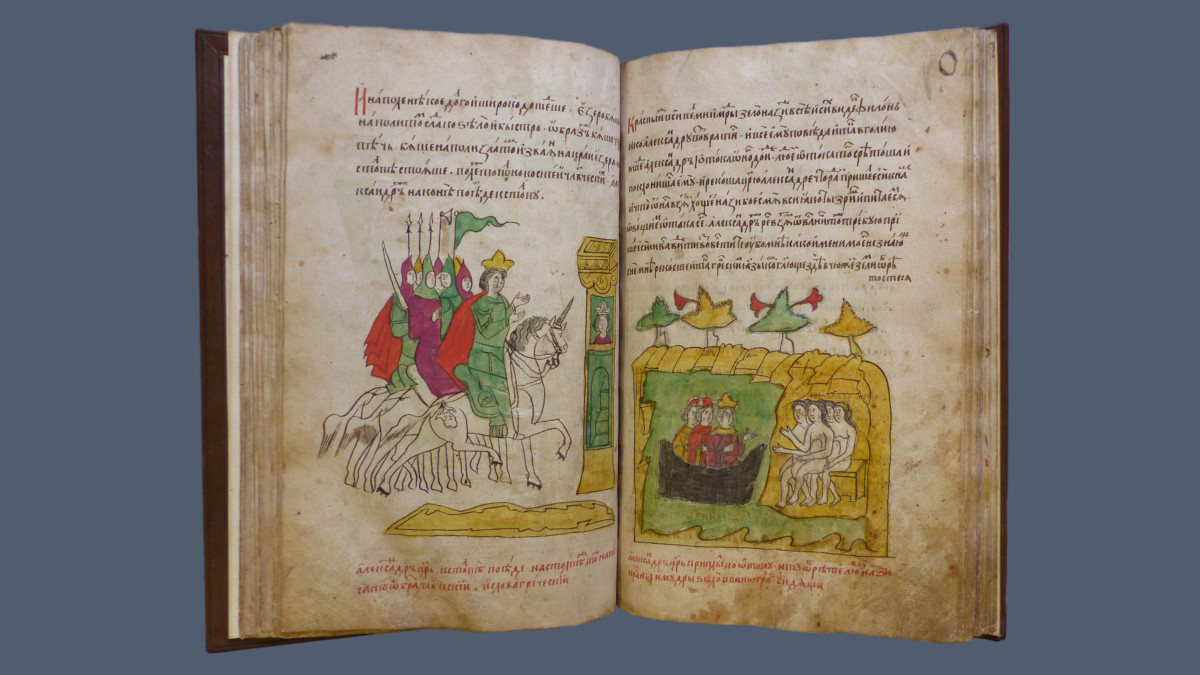Bookbinding Posts You Shouldn’t Have Missed this March
I’m a bit late this month. Having a holiday week (yes, I have a day job at school) and a vacation week one following the other didn’t mean I had more time to lie on my couch. I rather had more things to do at my workshop and less chance to prepare anything for iBookBinding.
To start repaying my debts, here is a traditional digest of blog posts published by other resources in March.
Delving into Russia — Conservation for Digitisation by Chester Beatty Conservation
One may imagine that everything related to Russia that is produced by the foreign media immediately grabs my attention. Especially when it is about book history — that’s not a common topic.
Chester Beatty Library takes part in a joint project with the Saint-Petersburg State University in Russia to produce a facsimile of seventeenth century manuscript of The Life of Alexander Nevskij (CBL W 151) that is held in the collection of the Library.
Prior to digitisation, book has to be properly prepared with observance of all the rules of book conservation.
Female Scribes in Early Manuscripts by Medieval Manuscripts Blog of the British Library
Medieval manuscripts blog had a thematic post on the 8th of March.
Recently, we received a query asking, ‘Which is the earliest European manuscript in the British Library’s collections that was created by a female scribe?’ The short answer is: we can’t tell! Female scribes worked on many of the same sorts of texts as male scribes and used the same sorts of scripts. Therefore, unless they signed their work or left other clues, there is no way of telling whether a given text was copied by a man or a woman. Luckily, however, there are clues in several relatively early Greek and Latin manuscripts at the British Library, including a letter from the 2nd century BC and an illustrated copy of scientific works from the 12th century.
http://blogs.bl.uk/digitisedmanuscripts/2017/03/female-scribes-in-early-manuscripts-.html
Why Margins are so Large? by Jan Grochocki
Jan had just launched his blog, however, he is already posting a lot of nice stuff. It would be reasonable to give you a link to his second post that was published in March: Bumps on the backs of books. What they are and where they come from?
All posts are in Polish. However, there lots of photos to supplement texts, and automatic translation is working pretty good.
I have the impression that the dimensions of margins are treated today… marginally. And this seemingly small thing can do wonders when it comes to looks, usability, and readability of the book. In addition, they are an instrument that a few decades ago was standard, and today is almost not used. So, what opportunities large margins in books give us?
- http://jangrochocki.pl/po-co-ksiazce-duze-marginesy/
- http://jangrochocki.pl/garby-na-grzbietach-ksiazek/
Nanotechnologies for Conservation at Conservators Converse
That’s a workshop recap. However, there are lots of nice details on the materials you would probably like to use during your conservation work.
In January 2017, Sarah Nunberg (Conservator in private practice, Stockman Foundation Fellow at Pratt Institute) and Dr. Cindie Kehlet (Professor, Department of Math and Science, Pratt Institute) organized a four-day workshop on Nanotechnologies in Conservation at the Pratt Institute in Brooklyn, NY. Dr. Piero Baglioni and Dr. Rodorico Giorgi of the University of Florence Research Center for Colloids and Surface Science (CSGI) lectured on two EU-funded projects, NANOFORART and NANORESTART. The workshop focused on three of the technologies CSGI developed for conservation of cultural heritage: gels, microemulsions, and nanoparticle solutions.
http://www.conservators-converse.org/2017/03/workshop-recap-nanotechnologies-for-conservation/
Removing a plastic corset from a manuscript by Rita Udina
Another remarkable conservation post was published by Rita Udina. Her texts are always a source of inspiration and knowledge. This one is about removing plastic from a manuscript.
How to freeze in time this valued mansucript? Thank God Internet gives us good advice: “protect your documents by laminating them“. Plasticizing the document seemed the best option: it would prevent the brittle letter from tears, fingerprints, possible mould damage, tide lines… nothing less than perfect!
But fate had a major mishap against the preservation of this family legacy, because the laminating machine got stuck with the manuscript just inside it. The paper was ejected like a stunted accordion, making it impossible to properly unfold it since some of the folds were stuck with each other. Moreover some paper spots got burnt in the most heated areas.
Wonderful Bibliotecă Astra in Sibiu by Arta Cărții
Mihai Vârtejaru has been to the Romanian town Sibiu in March and here is the report of his visit of Bibliotecă Astra there.
http://artacartii.blogspot.ru/2017/03/calatorie-1-sibiul-si-minunata.html
Read More
- Bookbinding Posts You Shouldn’t Have Missed this February
- 5 Beautiful Bookbinding-Themed Facebook Accounts to Follow This February
- Bookbinding Posts You Shouldn’t Have Missed in January
- 5 Beautiful Bookbinding-Themed Facebook Accounts to Follow This January
Please Support us on Patreon!
 The minimum level of contribution is only $1 per month.
The minimum level of contribution is only $1 per month.
Moreover, starting with the pledge level of $3, you will get a digitized vintage book about bookbinding, book history, or book arts each month from us!
These pledges help iBookBinding to continue its work and bring more information about bookbinding and book arts to you!

















